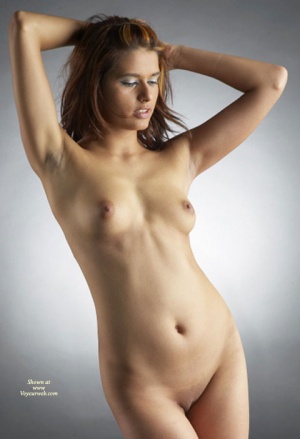Photographic lighting technique
Lighting is critical to capturing photographic images. Without light, it is really, really dark.
Artificial Lighting


Some people will use a camera's built-in flash to light a naked model. This technique is convenient and easy; however, the effects are often less than pleasing, unless you have a fetish for glowing red eyes.
Other photographers will use a flash accessory. These can be strobes, flash units, or even bulbs. Generally, these units are better than the built-in flash in terms of power and control. The unit is typically more offset from the lens than an onboard flash, which can help reduce the red eye effect. A grip can be used to hold the flash unit even further from the lens, however, shadows can result. Some flash units allow the light to be bounced off of the ceiling, walls, or small attachments. This "bounce flash" technique softens the shadows and eliminates red eye.
- Studio lighting usually has multiple lamps or strobes arranged to provide fill-light, direct lighting, and highlighting. Some studio photographers will use several lamps to completely light a model. Others may use only a single light source to make shadows that will accent the body topography.
- The fill-light illuminates the entire room - often pointed straight up to flood the room with light from all angles.
- Direct lighting places a light on the subject - for softer tones, a diffused light is used, such as a white linen sheet or translucent plastic.
- Highlighting is the term used to light the model from behind - not necessarily her backside/butt, but the side away from the camera. Highlighting will make an outline of her body or hair and separate her from the background - it can also make her appear to glow.
You can buy hundreds of dollars worth of lighting equipment and dozens of books to learn studio lighting, but practice and experience is the best method to master lighting techniques.
Multiple lights can be used to avoid an outline shadow being cast behind the naked female.
Natural Lighting
The sun is an excellent source of natural light. Sunlight at mid-day is called "white light" - you might argue that even at midday the sun looks yellow, but there is a lot of blue light coming from the sky and that adjusts the balance. All light is rated in terms of color temperature in Kelvin (K). A flash rated at 5500K would be identical to sunlight at mid-day. At sunrise or sunset, the color temperature is less than 5500K which will create a golden cast to the naked skin - see golden hour.
Outdoor lighting is much simpler than indoor lighting. You do not have to move around big, unwieldy light stands. The sun is going to be where it wants to be. That makes it simpler, but there's a catch... A model looking into the sun will likely squint, and that rarely looks flattering. Lit from the side, a model's nose can cast a shadow over her face, and her tits can create shadows on the body. High noon lighting is flat and provides the potential for raccoon eyes - shadows encompassing the area of the eyes. Fill flashes or reflectors (used to reflect the natural light back onto the model) can be utilized to help diminish or eliminate shadows.
Care should be taken when composing a photo in bright sunlight. A backlit model will have a bright background and her body in shadow. The camera may be metering on the overall image which could make the model underexposed. Conversely, metering strictly on the model could blow out or overexpose the background. Digital photography allows multiple pictures to be taken at no additional cost to utilize a range of exposures. Post processing of the images allows the use of 2 or more exposures of the same image to be layered then merged to achieve optimal exposure of different portions of the same initial image.
Creative Lighting
Images are both light and shadows. Eliminating shadows is not necessarily the goal of lighting. Using photographic light techniques to eliminate unwanted shadows is a goal. Deciding where a shadow is to be cast is a decision each photographer must make. Some issues like a harsh, crisp shadow outline of the female curve on the wall tends to be distracting to most viewers and fellow photographers. Just like an overhead light tends to make unflattering shadows, it can make beautiful definitions of her curves as well. It is up to the photographer to decide how to light a subject.
Lighting is critical to the photographer. It can mock, haunt, challenge and make his life miserable until the perfect combination is mastered. That perfect combination will be apparent to the viewer as the model's beauty shines from the image.